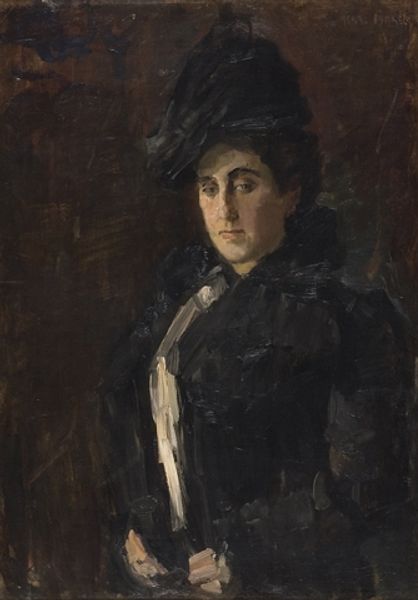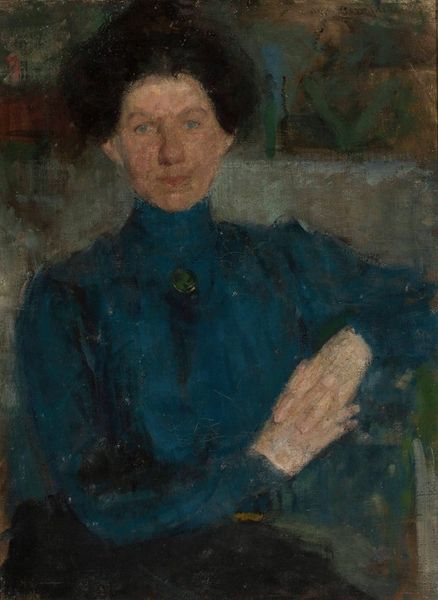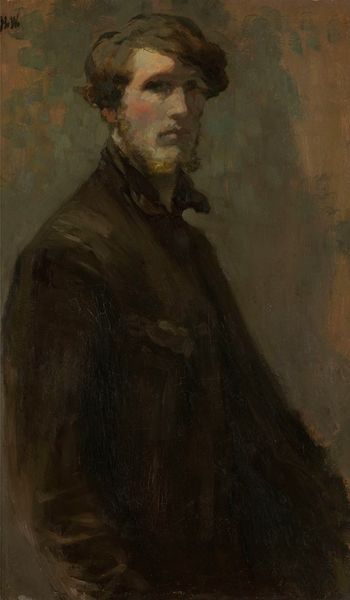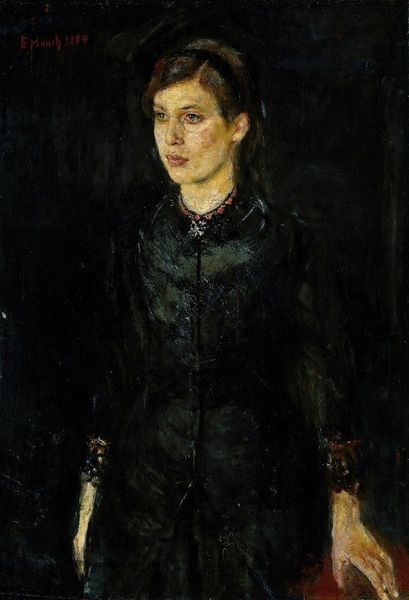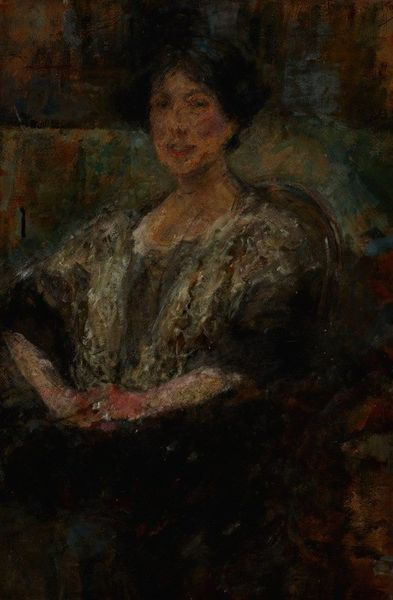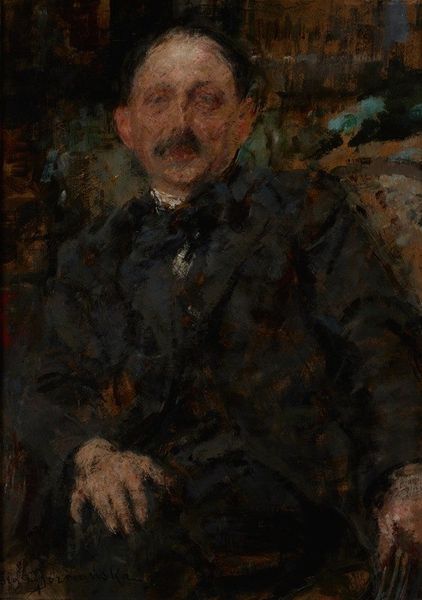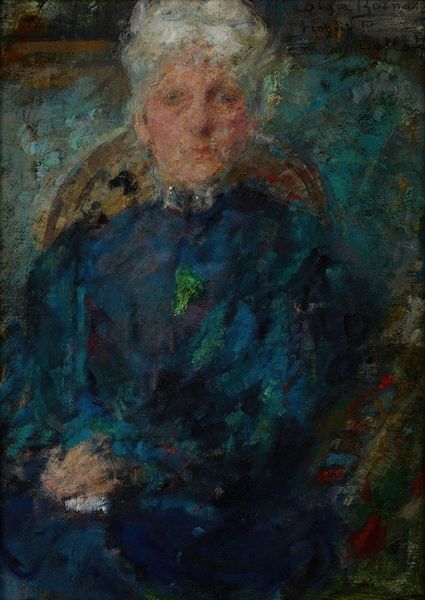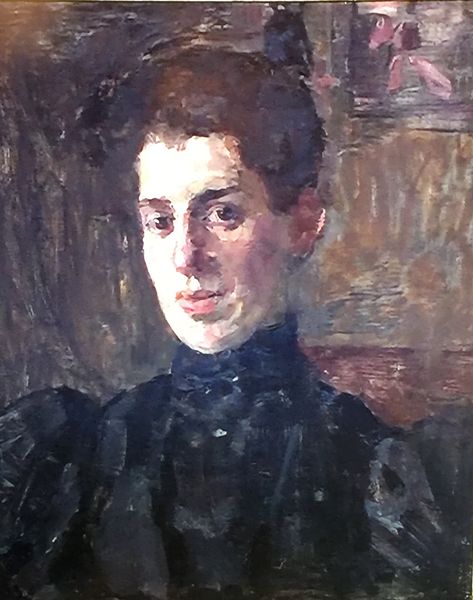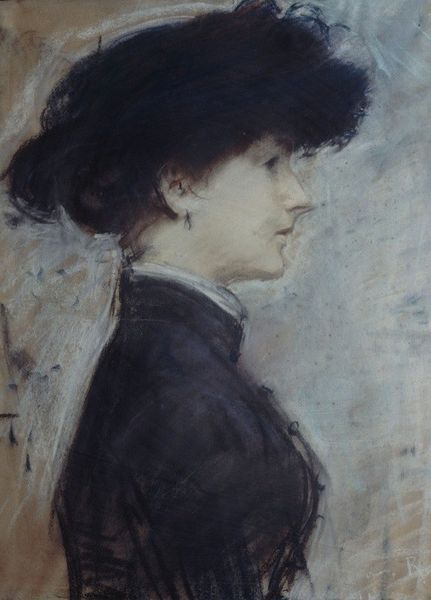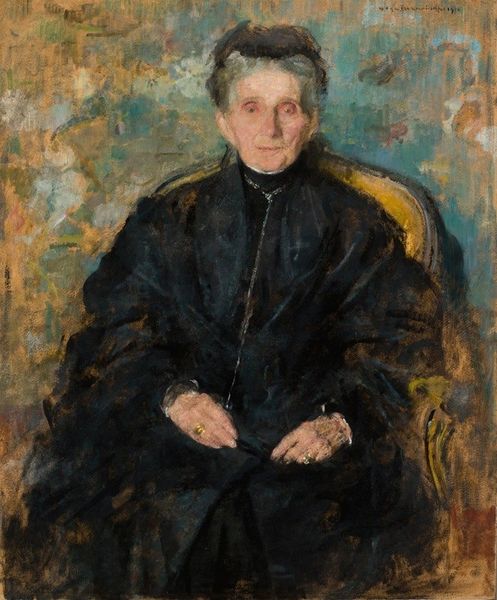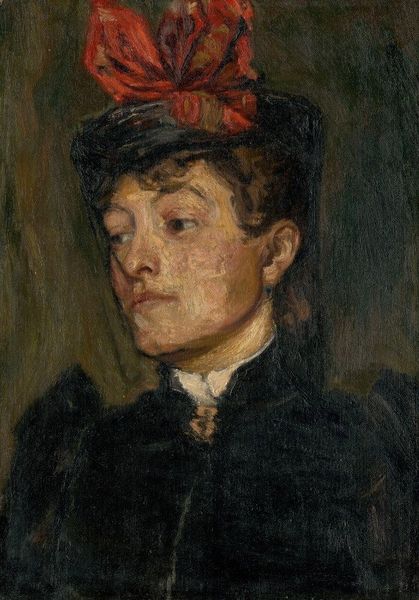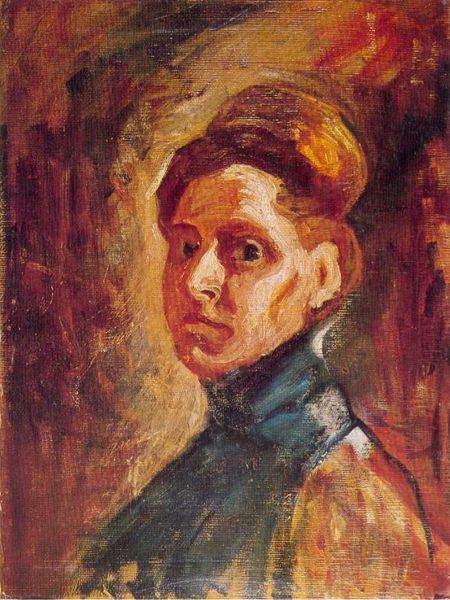
oil-paint
#
portrait
#
figurative
#
self-portrait
#
oil-paint
#
oil painting
#
modernism
Copyright: Public Domain: Artvee
Editor: We’re looking at Olga Boznanska’s "Self-Portrait," painted around 1908, using oil paint. The palette feels muted, and there’s an almost ghostly quality to the figure. How do you interpret this work? Curator: Boznanska, as a female artist in the late 19th and early 20th centuries, was navigating a space dominated by male perspectives. Her self-portraits are, I think, a radical act of self-definition. Does the somewhat obscured and blended depiction of herself feel like a strategic act of resistance? Editor: Resistance to… expectations of how women should be portrayed? Curator: Precisely. The loose brushwork and somber colors might be seen as a rejection of the polished, idealized images often demanded of female subjects. Consider how she is not presenting a direct gaze. Is this a deflection, or an invitation to look beyond the surface? Editor: I hadn't considered it that way. The blurriness now seems less like a stylistic choice and more like a deliberate statement. Curator: It's also worth noting the historical context. Modernism was emerging, and artists were questioning traditional academic styles. Boznanska’s technique aligns with that movement, but through a gendered lens, exploring the limitations placed upon female artists. What is gained or lost when reading art through a feminist perspective? Editor: That's something to think about – how identity and social context can reshape our understanding of a work's intention. I’ll remember to ask how different power structures influence both artist and audience. Curator: And I’m left pondering the subtle ways artists, like Boznanska, have used their work to negotiate their position within these systems.
Comments
No comments
Be the first to comment and join the conversation on the ultimate creative platform.


